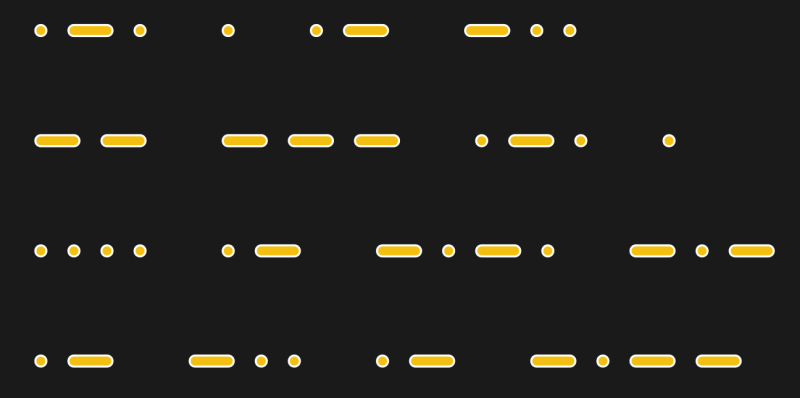Learning Morse Code is no longer a requirement for HAMs in many jurisdictions, but it’s still a nice skill to have. [I_void(warranties)] wanted to learn, but couldn’t find a trainer that fit his style. What to do but build it yourself? Since we’re in the midst of a challenge, he took up the gauntlet and turned his need to learn Morse into a 1 hertz Morse code game.
In concept it is quite simple: a message beeps out in Morse, with a corresponding LED flash, all in one second. The player then has one second to type think they heard. Get it done fast enough, and a character LCD will tell you if you scored.
The project is based around an Arduino Nano; thanks to easily-available libraries, a PS/2 keyboard can serve as input and a 2×16 LCD as feedback with no real effort expended. For the audible component of the Morse challenge, an 8-ohm speaker is driven right off a pin on the Arduino. We won’t claim this efficient design only took one second to put together, but it probably didn’t take too long.
Of course this trainer, unlike some we’ve seen, only helps you learn to listen to the stream of dots and dashes. None of the others ever tried to fit a One Hertz theme, or [I_void(warranties)]’s particular learning style. For some, decoupling send and receive might be just the ticket to finally learning Morse one second at a time.
















When I say the name of this character (W) you do NOT think…”well, there are three syllables, ‘duh,’ ‘bell,’ and ‘you,’ the third longer than the first two, and therefore that translates to (W).” No. To learn English that way would be crippling. Instead, you simply train the speech processing portion of your brain that the chatter “dubbleyou” equates to the letter “W”.
Similarly, while the principle behind morse code is dots and dashes, trying to learn characters on the basis of three-dots-and-a-dash or two-dashes-a-dot-and-a-dash will only lead to frustration and failure. Thus, “W” is NOT a dot and two dashes. Rather, it’s the chatter ” di-dah-dah” and it’s best to learn it that way.
I would suggest, then, for learning purposes, that the firmware in this project be tweaked to send the characters themselves very fast, whilst maintaining the one-hz character spacing.
Look into “Farnsworth” timing.
Applause for a Morse-related project.
It IS basically Farnsworth: The character speed is 15 wpm (80 ms dot period = PARIS in 4 seconds). They are sent at 60 characters per minute, so 12 wpm. A bit quick to start but kudos to newcomers who can leap to that speed right away.
My suggested tweak would be to allow the previous character to be typed while the new character is being sounded — let there be a buffer. After all, if you’re copying by hand, the character you’re writing lags the incoming sound by one or two (or more) characters.
better way https://lcwo.net/
good Polish website